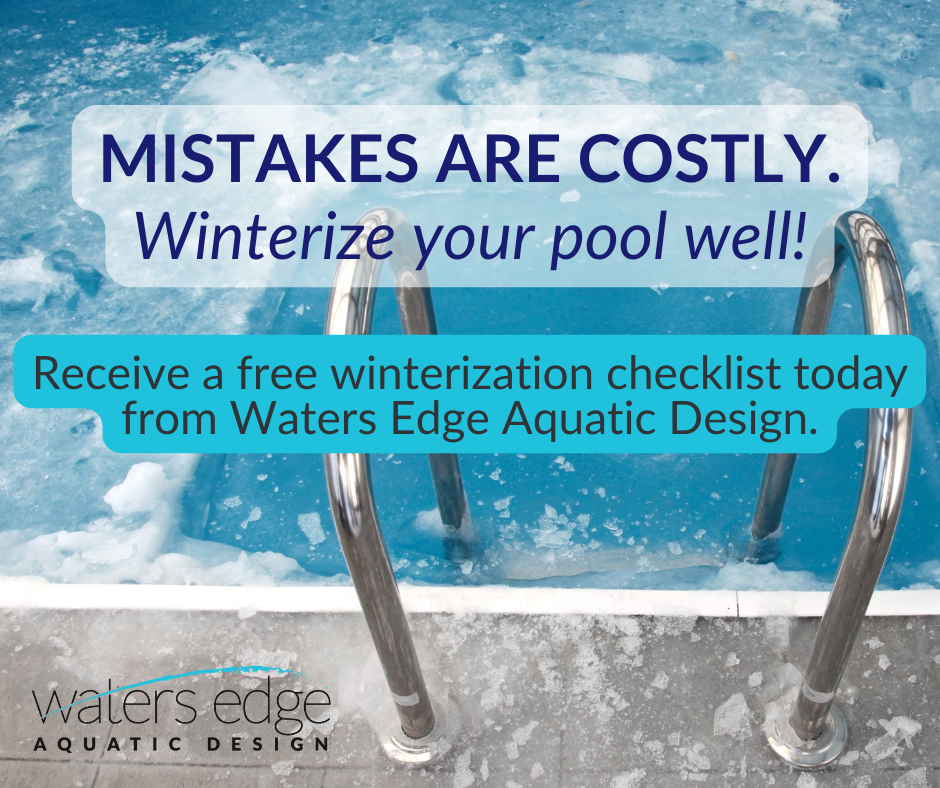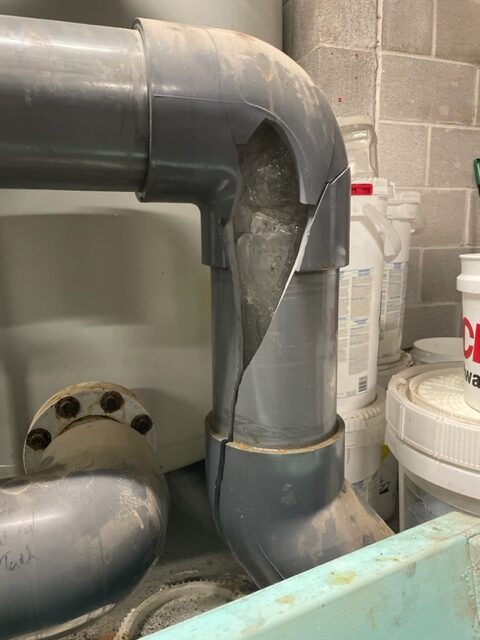Proper care of your outdoor pool involves winterizing at the end of the season. Mistakes made during the winterization process can leave you with a rough start next season, including costly repairs or worse, major pool leaks leaving you with a pool-less summer.
Waters Edge recommends performing a full and thorough shutdown so your pool lasts. Here are some tips to stay mindful of as you close for the season:
1. Get all the water out
The lowest parts of the pipes in a well-engineered pool should have drain plugs. Make sure these plugs are left open during winter to ensure water escapes and do not lose the plugs.
Often overlooked are the check valves. These valves help make sure the water flows in one direction preventing back flow while in operation. Make sure these are left open during winter as well.
Visually check pumps and strainer baskets to make sure the water is out. Water left in the pumps, strainer baskets and pipes can freeze during the cold months causing pipes to burst. Bursting pipes will be easy to detect in the pump room, but when a burst occurs in a return line or in a pipe located under concrete, it will be more difficult to detect and more expense to fix. These types of problems can lead to delayed season openings or even the full closure of a pool. Don’t start next season by having to bust up concrete to fix a busted pipe.
2. Clean out your chemical system, well!
Chemicals left in a system over winter can increase buildup and leave your lines nasty and clogged. If you are not performing proper maintenance on your chemical system, you might start to notice your pool water is unclear or turning green. A sign that your lines are clogged could be that the water chemical levels are testing at a non-registerable level even after placing proper chemical amounts in the system. Start each season with a fresh system by cleaning the chemical system during the winterization process.
Another chemical tip is to rinse the facility with a regular garden hose or power washer. Rinsing the pool basin and equipment, such as the slides, will help eliminate chemicals from sitting on the surface all winter. The harsh chemicals can erode paint, plastics and protective coatings. Take it a step further and wax your slides at the end of the season for extra protection.
3. Properly store rescue tubes
Make sure rescue tubes are fully dry, lying flat, and far from any chemicals. While hanging tubes up during the short summer months is fine, when they are left hanging all year the straps will start to fray and the tubes will disform.
Avoid throwing all the tubes together in a single bag at the end of the season. They can develop mold and need to be replaced next season, which adds unexpected costs during startup. Brian Hill, aquatics consultant for Waters Edge Aquatic Design, says that he has even gone as far as to individually bag each tube once they have dried to keep them clean, protected and as pristine as possible.
Rescue tubes are not the only items to give special treatment to during your winterization process. When removing equipment from the pool area, such as your deck ladders, basketball goals or diving boards, do not store them next to chemicals as this can cause the equipment to deteriorate.
Also Consider Reading: Overseeing An Extended Closure

Get Help: Waters Edge Aquatic Design offers operation and maintenance training at location sites. If you are one of our current, past, or future clients, we are vested in the longevity and quality of your pool. Reach out to us to discuss what type of training your staff might need to make sure your facility runs smoothly each season. Contact us today or download our free winterization checklist in the meantime.

